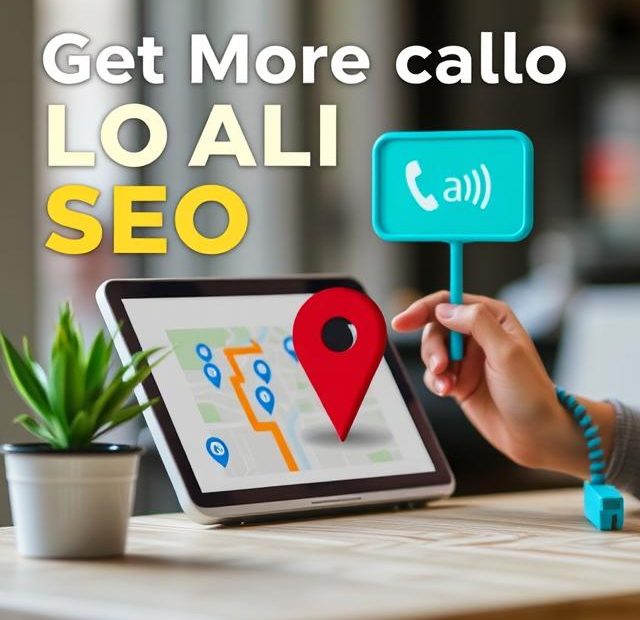In today’s mobile-first world, your business doesn’t just need to be online—it needs to be locally visible. If your phone isn’t ringing as often as it should, local SEO techniques could be the key to unlocking a flood of customer calls. Local SEO is a specialized form of search engine optimization that helps your business appear in local search results, maps, and directories. And when it’s done right, it can significantly increase the number of inquiries, appointments, and—most importantly—phone calls.
Here’s how to get started and boost your local visibility.
1. Optimize Your Google Business Profile (GBP)
Your Google Business Profile (formerly Google My Business) is the cornerstone of local SEO. This is the listing that shows up when someone searches for your business or businesses like yours in the area.
Key Steps to Optimize:
-
Claim and verify your profile.
-
Accurately fill out all information (business name, address, phone number, business hours).
-
Choose the right categories to describe your business.
-
Add high-quality images of your location, team, and products/services.
-
Write a keyword-rich business description to help Google understand your services.
A complete and optimized GBP can make your business more appealing and increase the likelihood that users will call directly from search results.
2. Use Local Keywords Smartly
Integrating location-based keywords into your website content, page titles, meta descriptions, and image alt tags is critical.
For example:
-
Instead of “Best hair salon,” use “Best hair salon in Dhaka.”
-
Include neighborhood names if applicable.
This helps search engines connect your business with local searches and positions you as the most relevant choice nearby.
3. Encourage and Manage Reviews
Online reviews aren’t just for reputation—they’re a ranking factor. Google considers the quantity, frequency, and quality of reviews when ranking local results.
Tips for Getting More Reviews:
-
Politely ask customers to leave a review after a purchase or service.
-
Use QR codes on receipts or signs to lead customers to your review page.
-
Respond to all reviews, even the negative ones, with professionalism. Google likes engagement.
Good reviews make your business look trustworthy, increasing the chances that someone will hit the “Call” button right from your listing.
4. Ensure NAP Consistency Across the Web
Your Name, Address, and Phone Number (NAP) must be consistent on your website, directories, and social media profiles. Inconsistencies confuse both search engines and potential customers.
Use the exact same formatting everywhere. For example:
-
Don’t use “St.” in one place and “Street” in another.
-
If your number is listed with the country code, use that same format everywhere.
This consistency builds trust with Google and improves your local rankings.
5. Add Call Buttons for Mobile Users
Most local searches happen on mobile devices. If your website doesn’t have a click-to-call button, you’re missing out on valuable leads.
Make sure:
-
Your phone number is clickable on all pages, especially your homepage and contact page.
-
Use “Call Now” CTAs that are easily visible and accessible.
Bonus: Use Google Call Tracking to see how many calls are coming directly from your search listings.
6. Use Local Schema Markup
Schema markup is a type of code that helps search engines understand your content better. LocalBusiness schema is designed specifically for brick-and-mortar businesses.
It can:
-
Highlight your NAP details.
-
Signal operating hours.
-
Improve the likelihood of rich results like “Call” buttons in search.
If you’re not tech-savvy, tools like Google’s Structured Data Markup Helper can make adding schema easier.
7. Leverage Local Listings and Directories
Beyond Google, get listed on other local directories such as:
-
Yelp
-
Bing Places
-
Apple Maps
-
TripAdvisor (for tourism-related businesses)
-
Facebook Business Page
These listings often show up in search results and give users another way to call or reach you. Plus, the backlinks can help your SEO efforts.
8. Create Local Content That Answers Questions
Start a blog or resources page on your website targeting local interests or FAQs.
For instance:
-
“How to Choose the Right Electrician in Chattogram”
-
“Top 5 Cafés for Remote Work in Sylhet”
When people search for local help or advice, you’ll be the one they find. These blogs not only boost your SEO but often convert into real phone inquiries when readers find value in your expertise.
9. Run Google Ads with Local Extensions
While SEO is a long game, Google Ads with location extensions can bring instant results. They allow users to see your location, call you directly, or get directions straight from the ad.
Use:
-
Call-only ads that prioritize phone calls over clicks.
-
Location targeting to ensure only nearby users see your ad.
Final Thoughts
Local SEO isn’t just about rankings—it’s about results. And for most small businesses, that means getting more phone calls. When you optimize your Google profile, create local content, encourage reviews, and make it easy for mobile users to reach out, you’re creating a powerful funnel that brings customers straight to your line.
Start small, be consistent, and monitor your results. With time and effort, local SEO will turn your online presence into a phone-ringing machine.
Also, you can learn more about Voice and Mobile Search here.
